A Visionary Engineer: Celebrating Prof. R. H. Paul’s Legacy – Father of Electrical Engineering Education in Sri Lanka
By PUBLICITY DIVISION (IESL)
The Institution of Engineers Sri Lanka (IESL) continues its tradition of honoring the life and legacy of Prof. R. H. Paul, a trailblazer in engineering education and practice in Sri Lanka. Every year, IESL commemorates his birth anniversary with a memorial oration, keeping alive the memory of his unparalleled contributions to the engineering profession. This year, the memorial oration was delivered on February 7, 2025, by Prof. Lilantha Samaranayake, who spoke on the timely topic: "Advancing Solar PV Integration: Addressing Challenges for a Resilient and Sustainable Energy Future."
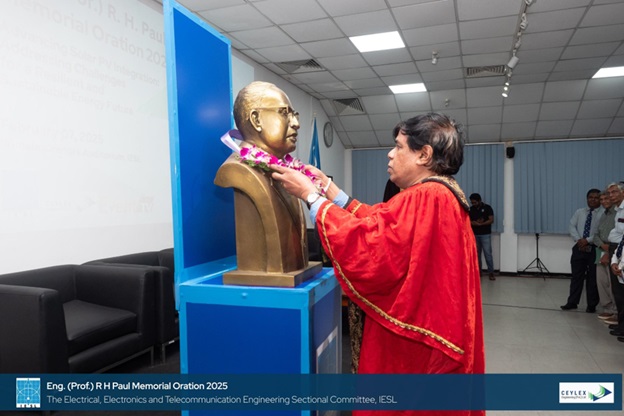
Born on February 9, 1904, Prof. R. H. Paul displayed exceptional brilliance from an early age. At just 20 years old, he graduated with a B.Sc. (General) degree from the University of London, achieving First-Class Honors through University College, Colombo. His academic excellence earned him the prestigious Coomaraswamy Prize for Physics and the Ceylon Government Engineering Scholarship, enabling him to pursue further studies at the University of Cambridge, United Kingdom. In 1928, he became the first Sri Lankan to obtain the Mechanical Science Tripos with First-Class Honors.
Prof. Paul returned to Sri Lanka in 1930 and joined the Ceylon Technical College as a lecturer in 1933. His visionary leadership and tireless efforts transformed the college into a recognized institution for engineering education. In 1944, the University of London accredited the college for preparing students for its B.Sc. (Engineering External Degree), a landmark achievement. Recognizing his contributions, he was appointed the first Professor of Electrical Engineering at the college and later served as its Director from 1944 to 1949.
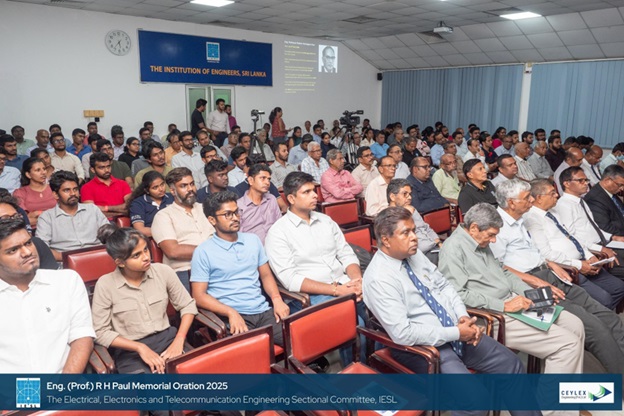
With the establishment of the Faculty of Engineering at the University of Ceylon in 1950, Prof. Paul was appointed the first professor of electrical engineering. A founding member of the university, he played a pivotal role in shaping engineering education during Sri Lanka’s post-independence era, when the country faced an urgent need for skilled engineers to support national development. Prof. Paul designed innovative curricula, trained faculty, and oversaw the development of cutting-edge facilities, including the iconic Electrical Engineering Laboratory Complex at the university's Peradeniya campus.
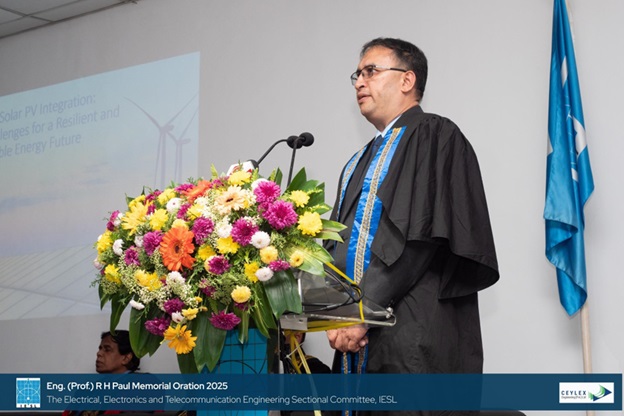
In addition to his academic achievements, Prof. Paul made significant contributions to engineering practice. He played a key role in transforming the Department of Electrical into what is now the Ceylon Electricity Board and served on prominent committees such as the Commission on Broadcasting and Information (1965) and the Advisory Board of Technical Education (1966).
A champion of scientific research, Prof. Paul authored numerous papers, one of which earned him the Overseas Premium in 1944. His leadership extended to professional organizations; he served as the President of IESL in 1968, was a Fellow of the Institution of Electrical Engineers, UK, and represented Sri Lanka internationally. He also played a key role in founding the Sri Lanka Association for the Advancement of Science, serving as its General President in 1945.
Though known for his meticulousness and firm discipline, Prof. Paul was deeply devoted to his students and colleagues. He believed that advancing engineering education would uplift the nation and dedicated his life to achieving that vision. In recognition of his immense contributions, the University of Ceylon posthumously conferred on him the degree of Doctor of Science (Honoris Causa)
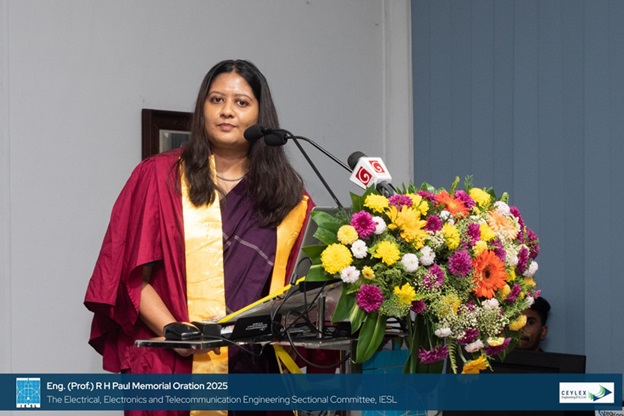
Prof. Paul passed away on July 3, 1978, at the age of 74, leaving behind a legacy that continues to inspire generations of engineers. As IESL commemorates his memory with the annual memorial oration, his story serves as a testament to how one individual’s dedication can profoundly impact a nation. Recording - https://www.youtube.com/watch?v=hSYFIQEWY9c
From the oration…..
Will the Grid be stable? Advancing Solar PV Integration: A Vision for a Sustainable Energy Future
Prof. Lilantha Samaranayake, Dean of the Faculty of Engineering at the University of Peradeniya, delivering the Eng. (Prof.) R. H. Paul Memorial Oration 2025, emphasized the urgent need for advanced solar photovoltaic (PV) integration to build a resilient and sustainable energy future.
The Future of Renewable Energy
Prof. Samaranayake highlighted projections from the International Energy Agency (IEA), which forecast that by 2030, global renewable electricity generation will surpass 17,000 TWh—a nearly 90% increase from 2023. Solar PV is expected to become the leading source of renewable electricity, followed by wind and hydroelectric power.
With Sri Lanka setting an ambitious target of achieving 100% renewable energy, policymakers are working towards a people-centric energy transition that is equitable and affordable. The government also aims to reduce electricity tariffs by 30% within five years, though no specific timeline has been set for net-zero emissions.
Challenges in Solar PV Integration
While renewable energy adoption is increasing, challenges remain. A major issue is grid stability due to the intermittent nature of solar energy. Grid stability refers to the ability of an electrical power grid to maintain a consistent voltage and frequency while balancing electricity supply and demand. One of the main challenges with integrating solar energy into the grid is its intermittent nature—meaning that solar power generation fluctuates depending on sunlight availability. This variability can cause instability in the grid.
Why is Solar Energy Intermittent?
Solar panels generate electricity only when exposed to sunlight. At night, there is no generation, requiring alternative power sources. Cloud cover, rain, and seasonal changes affect solar energy output. On cloudy days, solar generation can drop suddenly, causing fluctuations in power supply. Unlike conventional power plants that provide a steady output, solar energy can vary within minutes, making it difficult to maintain a stable power flow.
How Does This Affect Grid Stability?
Electricity grids operate at a specific frequency (e.g., 50 Hz or 60 Hz). A sudden drop in solar power generation can lead to a decrease in frequency, potentially causing power outages. Solar energy injections can cause voltage levels to rise or drop unpredictably, affecting equipment performance and consumer supply quality. Traditional power plants have rotating generators that provide inertia, helping to stabilize the grid. Solar PV systems do not have this natural inertia, making the grid more susceptible to instability.
Prof. Samaranayake explained that Sri Lanka's current power generation mix, as of November 2024, includes:
· 27% from hydroelectric power
· 19.6% from rooftop solar
· 14.3% from coal
· 13.6% from oil
· 5.1% from private oil plants
· Smaller contributions from wind, biomass, and other renewable sources
A key concern is the lack of inertia in renewable energy sources. Unlike conventional power plants, solar and wind do not provide inherent grid stability, leading to frequency fluctuations.
Innovative Solutions for Grid Stability
To address this issue, Prof. Samaranayake proposed the implementation of Virtual Inertia using advanced power electronic control systems. This approach mimics the stabilizing effect of traditional rotating generators, ensuring a steady frequency supply in the grid.
Other potential solutions include:
· Adding rotating machines such as LNG or nuclear power plants
· Energy storage systems like pumped storage, flywheels, and large-scale battery systems
· Enhancing grid regulations to support the integration of rooftop solar PV systems
The introduction of advanced Virtual Inertia technology is expected to complement regulatory changes that relax statutory voltage limits and improve the quality of electricity supply.
Sri Lanka’s Nuclear Energy Prospects
Another controversial yet forward-looking strategy discussed was the possibility of nuclear energy. According to sources from the Sri Lanka Atomic Energy Board (SLAEB), the country’s first nuclear power plant could be operational by 2032, leveraging integral pressurized water reactor (iPWR) technology. Given Sri Lanka’s geographical proximity to India, which already operates nuclear plants, proponents argue that nuclear energy could be a viable option for stabilizing the power grid.
The Road Ahead
Prof. Samaranayake concluded by emphasizing that while solar PV is a crucial component of Sri Lanka’s energy future, a holistic approach is needed. This includes investing in energy storage, strengthening grid infrastructure, and adopting regulatory reforms. He urged policymakers, engineers, and the public to collaborate in shaping a more sustainable and resilient energy landscape.
The Eng. (Prof.) R. H. Paul Memorial Oration serves as a reminder of the critical role that engineering and innovation play in tackling global energy challenges. With strategic planning and technological advancements, Sri Lanka can pave the way for a cleaner, more sustainable future.
The oration paid tribute to the late Prof. R. H. Paul, a distinguished academic and former Dean of the Faculty of Engineering, University of Peradeniya, who made significant contributions to electrical and electronic engineering in Sri Lanka. His legacy continues to inspire advancements in the energy sector.
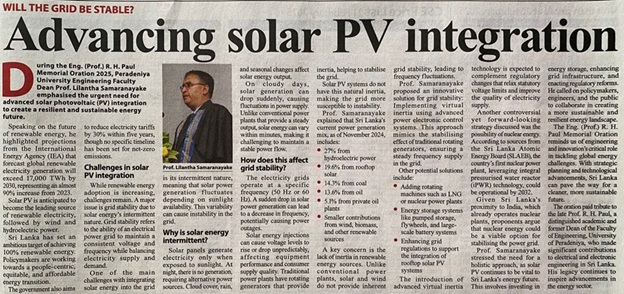
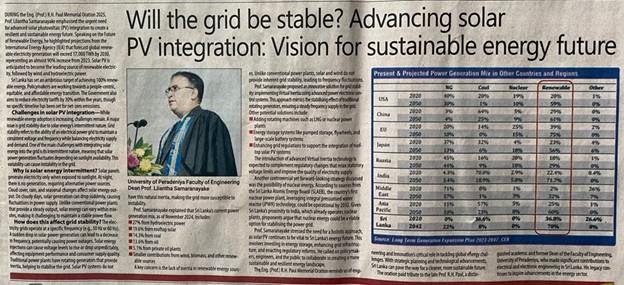
Will the Grid be stable? Advancing Solar PV Integration: A Vision for a Sustainable Energy Future (21.02.2025, Ada Derana Biz, Online )
Will the Grid be stable? Advancing Solar PV Integration: A Vision for a Sustainable Energy Future (21.02.2025, LMD, Online)
Will the Grid be stable? Advancing Solar PV Integration: A Vision for a Sustainable Energy Future (22.02.2025, 7newspulse.com, Online )
Will the Grid be stable? Advancing Solar PV Integration: A Vision for a Sustainable Energy Future (22.02.2025, Times24.lk, Online)
Will the Grid be stable? Advancing Solar PV Integration: A Vision for a Sustainable Energy Future (22.02.2025, Daily, FT, Online)




